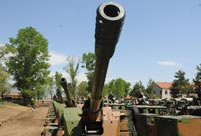

LIBERATE THE PEOPLE, ECONOMY
Deng, who is one of the lawmakers attending the country's parliamentary session, said that zip lining was especially dangerous at night.
"Even with a flashlight, I could not see anything," he said.
The bridges have changed locals' lives and invigorated the local economy.
The elderly were often too scared to use the zip line and when the new bridge was built they were able to live fuller and more liberated lives.
In addition, improved transportation links have eased the transportation of construction materials, resulting in about a third of the area's households building new homes.
Thanks to the bridge, villager You Zaodui built a two-storey home at a cost of 60,000 yuan, compared to around 80,000 yuan previously, in only six months.
In addition, the booming economy has also created jobs. Another villager, Lu Eryi, who used to be a farmer said he now earns "much much more" in his new job as a truck driver.
Transportation infrastructure was identified as a crucial aspect of China's long term poverty alleviation campaign. In his government work report, the premier said the rural poor population would be reduced by 10 million this year, with 200,000 kilometers of rural roads built or upgraded during the same period.
The world's most populous country, which aims to eradicate poverty by 2020, still has 70 million people living under the poor line in rural areas.
 |
 Attendants-to-be join Mr. & Miss Campus Contest
Attendants-to-be join Mr. & Miss Campus Contest China hosts overseas disaster relief exercise for the first time
China hosts overseas disaster relief exercise for the first time 20 pairs of twins who will become flight attendants in Sichuan
20 pairs of twins who will become flight attendants in Sichuan J-11 fighters in air exercise
J-11 fighters in air exercise PLA soldiers operating vehicle-mounted guns in drill
PLA soldiers operating vehicle-mounted guns in drill Beauties dancing on the rings
Beauties dancing on the rings Blind carpenter in E China's Jiangxi
Blind carpenter in E China's Jiangxi Top 10 highest-paid sports teams in the world
Top 10 highest-paid sports teams in the world In photos: China's WZ-10 armed helicopters
In photos: China's WZ-10 armed helicopters Obama is sowing discontent in S.China Sea
Obama is sowing discontent in S.China Sea Rescuers work through night to reach cruise ship survivors
Rescuers work through night to reach cruise ship survivors Driving through limbo
Driving through limbo Facing down MERS
Facing down MERSDay|Week